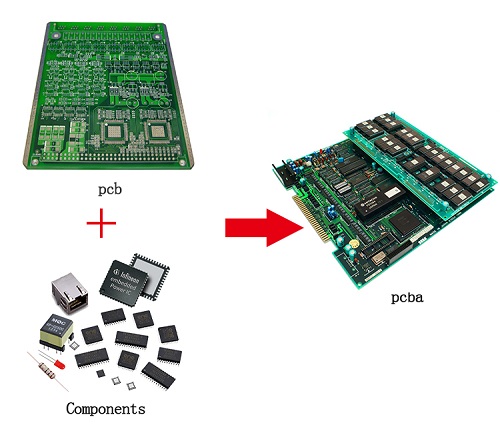About us
FASTPCBA Co.,Ltd
-
 Building 1, Senyang Electronic Technology Park, Guangming High-tech Park, Yutang Street, Guangming District, Shenzhen City.
Building 1, Senyang Electronic Technology Park, Guangming High-tech Park, Yutang Street, Guangming District, Shenzhen City.
-
 F:86-13418481618
F:86-13418481618
-
 pcba13@fastpcba.cn
pcba13@fastpcba.cn
 date:2019-05-04 10:57:00
date:2019-05-04 10:57:00
In SMT circuit board assembly process,do you know the PCB craft process?(1)
1.Cutting material
Cutting is the process of cutting the original copper clad board into a board that can be made on the production line.

First let's take a look at a few concepts:
(1) UNIT: UNIT refers to the unit graphic designed by the PCB design engineer.
(2) SET: SET refers to a figure in which an engineer combines multiple UNITs in order to improve production efficiency and facilitate production. That is, we often say the panel , which includes unit graphics, craft edges and so on.
(3) PANEL: PANEL refers to a board composed of multiple SETs and a tool board edge for the purpose of improving efficiency and convenient production.
2. Inner layer dry film
The inner dry film is the process of transferring the inner layer pattern to the PCB.
In smt circuit board assembly production we will mention the concept of graphics transfer, because the production of conductive graphics is fundamental to PCB fabrication. Therefore, the graphics transfer process is very important for smt circuit board assembly production .
The inner dry film includes a plurality of processes such as inner layer filming, exposure development, and inner layer etching. The inner layer film is a special film on the surface of the copper plate, which is what we call dry film. This film cures when exposed to light, forming a protective film on the board. Exposure development is to expose the film-coated board, the light-transmissive portion is cured, and the portion that does not transmit light is still a dry film. Then, after development, the uncured dry film fade out, etch the board with curing protective film. After the film fade out, the inner layer pattern is transferred to the board.
For designers, our main considerations are the minimum line width of the wiring, the control of the spacing, and the uniformity of the wiring. Because the spacing is too small, the film will be trapped and the film will not fade out and cause a short circuit. The line width is too small, and the adhesion of the film is insufficient, causing the line to open. Therefore, the safe spacing of the circuit design (including lines and lines, lines and pads, pads and pads, lines and copper surfaces, etc.) must consider the safe spacing during smt circuit board assembly production.
(1) Pretreatment: grinding plate
The main functions of the grinding plate: basic pre-treatment is mainly to solve the problem of surface cleanliness and surface roughness. Remove oxidation, increase the roughness of the copper surface, and facilitate the attachment of the film to the copper surface.
(2) Film
The treated substrate is attached to the dry film or the wet film by hot pressing or coating to facilitate subsequent exposure smt circuit board assembly production.
(3) Exposure
The backsheet is aligned with the substrate on which the dry film is pressed, and the film pattern is transferred onto the photosensitive dry film by irradiation with ultraviolet light on an exposure machine.
(4) Development
The unexposed dry film/wet film was dissolved and washed away by the weak alkalinity of the developing solution (sodium carbonate), and the exposed portion was retained.
(5) etching
The unexposed dry film/wet film is removed by the developer to expose the copper surface, and the exposed copper surface is dissolved and etched away with acidic copper chloride to obtain the desired wiring.
(6)Fade out film
The exposed dry film protecting the copper surface was peeled off with a sodium hydroxide solution to reveal a line pattern.
3. Browning
Purpose: To form a microscopic rough and organic metal layer on the inner copper surface to enhance the adhesion between the layers.
Process principle: The chemical treatment produces a uniform organic metal layer structure with good adhesion characteristics, so make the surface of copper layer controlled roughing before inner layer bonding, and is used to strengthen the pressure plate between the inner copper layer and the prepreg strength.
 Building 1, Senyang Electronic Technology Park, Guangming High-tech Park, Yutang Street, Guangming District, Shenzhen City.
Building 1, Senyang Electronic Technology Park, Guangming High-tech Park, Yutang Street, Guangming District, Shenzhen City.
 F:86-13418481618
F:86-13418481618
 pcba13@fastpcba.cn
pcba13@fastpcba.cn